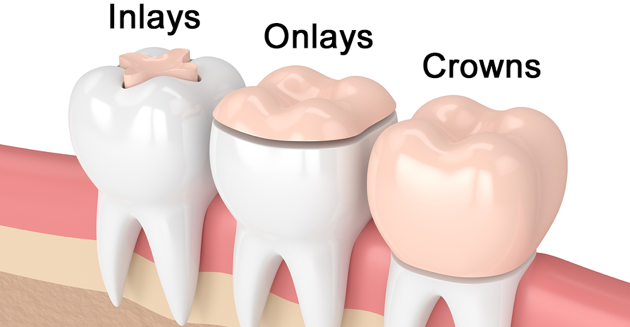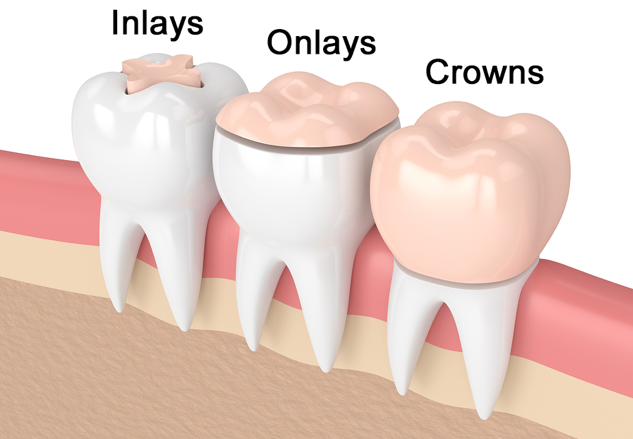If you have a decayed tooth, there are a variety of options to restore your tooth to its form and function. A couple of those options are dental inlays and onlays.
Dental inlays and onlays are tooth fillings, made in a single piece, outside the mouth (that is, in a dental laboratory) and fitted or bonded into the tooth cavity. Hence, they are called indirect fillings. They are different from direct fillings (done with amalgam, composite or glass ionomer cement) which are built up inside the mouth.
These indirect fillings are used in the back teeth; they are called inlays when they fit inside the tooth, and called onlays when they cover one or more of the pointed chewing surfaces called “cusps”. They can be made from gold, ceramic or composite materials.
WHEN DO YOU NEED DENTAL INLAYS OR ONLAYS?
- When there is extensive tooth decay, such that the tooth structure left cannot support a direct filling. When the tooth cusps are weakened, inlays and onlays give additional support that direct fillings will not provide.
- When you need to replace an old filling
- When the tooth damage is not sufficient enough to require a crown.
Inlays and onlays are more conservative than crowns, because they require less tooth tissue to be removed.
- It can be used as a retainer for a dental bridge
WHAT TO EXPECT
The treatment usually requires multiple visits.
On your first visit, your dentist will introduce himself to you and discuss the procedure with you.
He will numb the tooth using local anesthesia, after which he will clean out the decay in the tooth. He will take an impression of your mouth, which will be sent to the laboratory and used to make a model of your mouth for the production of your inlay or onlay. He will place a temporary filling in that tooth.
On your next visit, he will cement or bond the inlay or onlay into your tooth and ensure it fits you perfectly.

POST-PROCEDURE CHECKLIST
- Ensure that you book your next appointment before leaving the clinic.
You should see a dentist every six months, even if you have no pains or discomfort, that’s the key to healthy gums. - Inform your dentist of any concerns you may have
- Maintain good oral hygiene
- Adhere to any post-procedure instructions given to you
FAQ
Inlays and onlays are durable and long-lasting but they do not last forever. They can last for 20 to 30 years.
Prevention is key, so visit Schubbs Dental Clinics at least every six months even if you have no complaints or discomfort. Book an appointment with one of our dentists today!


